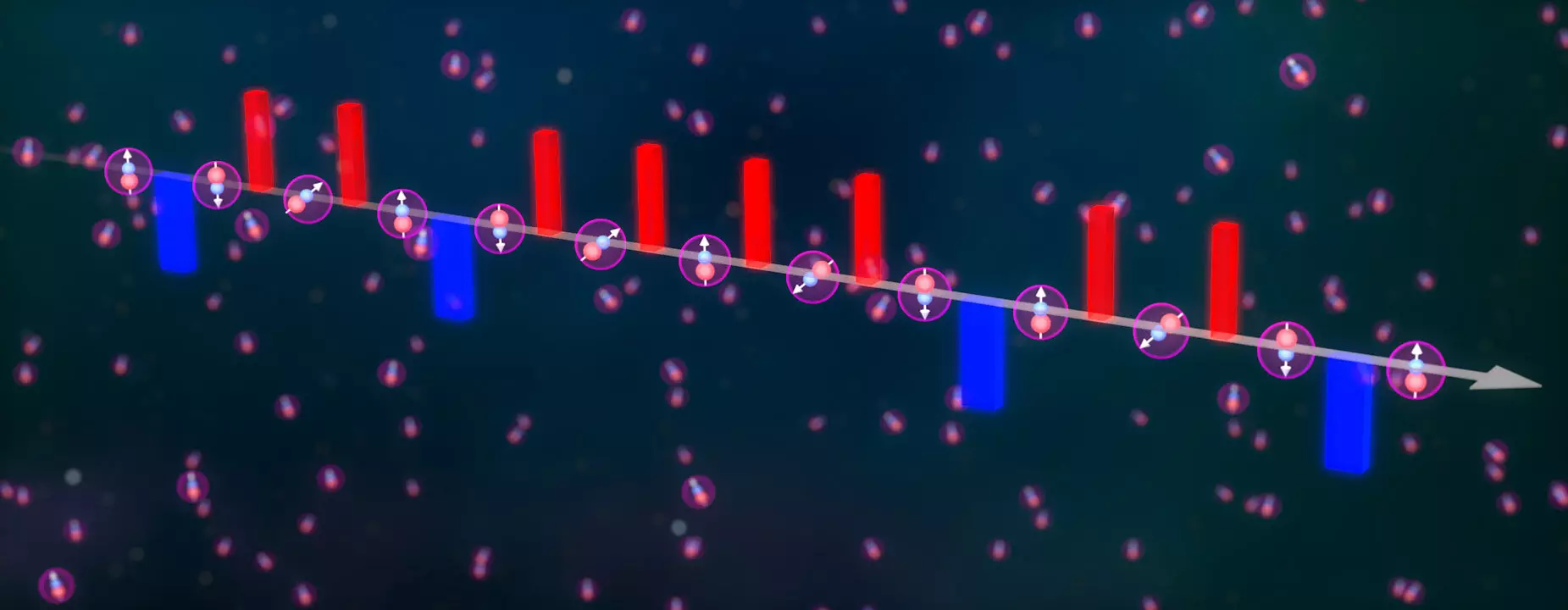The microscopic world of quantum spins continues to fascinate scientists, offering profound implications for understanding magnetism and superconductivity. Despite the richness of these phenomena, manipulating quantum systems in laboratory settings poses significant challenges. In a breakthrough study, collaborative efforts between Jun Ye’s team at JILA and NIST, alongside Mikhail Lukin’s group at Harvard University, have advanced our capabilities to control quantum interactions. Leveraging the innovative technique of Floquet engineering, researchers have effectively tuned interactions among ultracold potassium-rubidium molecules, promising novel insights into quantum many-body systems.
Floquet engineering is metaphorically akin to a “quantum strobe light” that enables scientists to impose periodic, time-dependent driving forces on physical systems. This technique allows researchers to excite quantum states with precise control over how particles engage with one another. By employing periodic microwave pulses, Ye’s team has developed a methodology to streamline interactions among ultracold polar molecules. The custom-developed FPGA-based arbitrary waveform generator has transformed research limitations into opportunities, enabling thousands of tailored pulses to be administered. This advancement allows the fine-tuning of how individual particles in the system interact, showcasing the nuanced dance between them.
This control mechanism has notable implications for the manipulation of quantum spins in ultracold molecules. By encoding quantum information into the two lowest rotational states of potassium-rubidium pairs, researchers create a quantum superposition of these states, setting the stage for intricate investigations into the dynamics of quantum interactions.
A particularly exciting facet of this research is the observation of two-axis twisting dynamics within the ultracold system. This phenomenon involves manipulating quantum spins along two orthogonal axes, leading to the formation of entangled states. Such entanglement is paramount for improving quantum sensors, as it permits a higher degree of sensitivity than traditionally achievable. Calder Miller, the study’s lead author, underscores this sentiment by emphasizing the molecules’ complex energy structures and the potential for these interactions to reveal new physics.
Two-axis twisting was theorized in the early 1990s. However, until now, its practical realization awaited an innovative experimental approach. The ability of this study to confirm two-axis twisting not only validates the concept but also opens avenues for future advancements in precision measurements and spectroscopy.
While mathematical tools like the Bloch sphere depict spins in a theoretical framework, envisioning the interactions of molecules as a dance can provide a more relatable understanding. The molecules form pairs, exhibiting behaviors of pushing and pulling influenced by their neighbors, which on a quantum level corresponds to alterations in spin orientation. During the experiment, this “dance” is choreographed through the application of Floquet-engineered microwave pulses that modify interactions, leading to a richer understanding of magnetic phenomena.
The team’s meticulous adjustments in pulse sequences have allowed for the realization of asymmetric interactions that evade conventional electric field applications. The ability to create such tailored conditions redefines our approaches to quantum simulations and may pave the way for groundbreaking discoveries.
The research presents a tantalizing glimpse into the future of quantum physics. As the team continues to refine their experimental setup, the next logical step will be to enhance detection techniques to confirm entanglement among the created states. While the study did not achieve this verification, the foundational work lays the groundwork for further exploration of entangled states and their implications for quantum technology.
Beyond Ye’s lab, James Thompson’s team has simultaneously explored cavity quantum electrodynamics to demonstrate two-axis twisting, highlighting the simultaneous advancements across different approaches in quantum research. Together, these initiatives emphasize the collaborative spirit that is crucial for unraveling the complexities of quantum mechanics.
The advances in controlling quantum spins using Floquet engineering mark a significant leap in our ability to manipulate ultracold molecules. By harnessing these interactions and identifying mechanisms like two-axis twisting, researchers stand on the brink of unlocking a deeper understanding of quantum systems, with implications that extend into both theoretical and applied physics.

